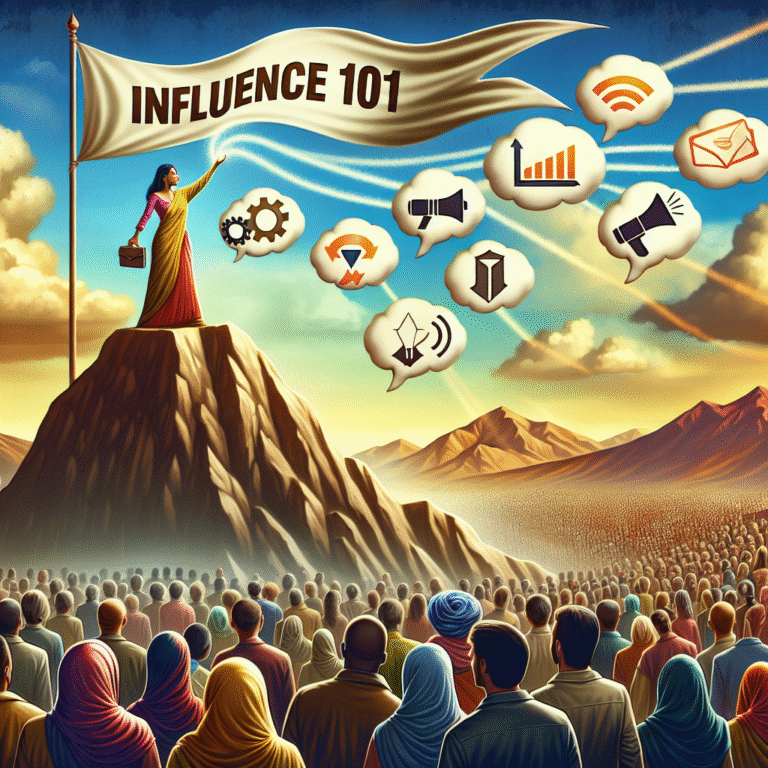
Introduction
Imagine a teenager at a party, surrounded by friends drinking from red Solo cups, while they nervously clutch a soda in their hand. They know their choice, a non-alcoholic drink, is the sensible one, yet the pressure to conform looms large. This situation encapsulates "The Power of Peer Pressure: Social Norms and Their Impact on Behavior." Whether we admit it or not, the invisible hand of social norms governs many of our actions, often in profound ways. Understanding this phenomenon can unlock strategies to harness peer influence positively, leading to better choices and flourishing relationships.
As we dive into the complexities of peer pressure and its societal impact, we will explore various case studies, analyze the data behind these social dynamics, and uncover practical insights for navigating this powerful tool.
Understanding Peer Pressure and Social Norms
What is Peer Pressure?
Peer pressure refers to the direct or indirect influence that individuals in a social group exert on each other. The effects can be positive or negative, motivating individuals to adopt behaviors, attitudes, or practices to fit in or comply with group expectations.
Social Norms: The Unwritten Rules
Social norms are the unwritten guidelines that dictate acceptable behavior within a group. These norms are often established over time, based on shared values, and can vary significantly between cultures and subcultures. When someone observes a behavior that aligns with these norms, it can create a ripple effect, influencing others to conform.
The intertwining of peer pressure and social norms creates a powerful force that shapes behavior in profound ways, making it essential to understand their impact.
The Mechanisms Behind Peer Pressure
Conformity and Group Dynamics
At the heart of peer pressure lies the psychological phenomenon known as conformity. Conformity occurs when individuals alter their beliefs or actions to align with those of a group, often driven by the desire for social acceptance. A study conducted by Solomon Asch in the 1950s demonstrated this concept elegantly. Participants were asked to match line lengths, and despite clear evidence to the contrary, many conforming to the group’s incorrect responses.
Table 1: Asch’s Conformity Study Results
| Group Size | % Conformity |
|---|---|
| 1 | 3% |
| 2 | 13% |
| 3 | 32% |
| 4+ | 75% |
The Role of Authority Figures
In addition to peer influence, authority figures play a significant role in shaping norms and behaviors. Imagine a young professional in a corporate setting observing their colleagues engage in unethical practices, believing it is acceptable because their superiors do so. This dynamic can lead to an ambiance where questionable behaviors are normalized, showcasing the dual power of peer pressure and authority in influencing conduct.
Case Study: The Stanford Prison Experiment
One of the most notorious illustrations of peer pressure’s impact is the Stanford Prison Experiment, conducted by psychologist Philip Zimbardo in 1971. Participants were assigned roles as guards or prisoners in a simulated prison environment. The guards, influenced by their peers and authority, began to exhibit abusive behavior toward the prisoners, showcasing how quickly social norms can shift based on perceived roles. This experiment resulted in overwhelming evidence of how powerful peer pressure can be in dictating behavior within a social context.
Positive Applications of Peer Pressure
While peer pressure often carries a negative connotation, it can also serve a positive purpose.
Fostering Healthy Habits
Case Study: The Freshman 15 Initiative
Many colleges have recognized the detrimental effects of unhealthy lifestyles among incoming students. Initiatives aimed at promoting physical fitness and healthy eating were implemented, utilizing the concept of positive peer pressure. Students engaged in group fitness classes and shared healthy eating tips, leading to healthier choices and better overall well-being.
- Table 2: Impact of Positive Peer Pressure on Health Choices
| Health Initiative | % Increased Participation |
|---|---|
| Group Exercise Classes | 40% |
| Healthy Eating Awareness | 30% |
| Reduced Smoking Rates | 25% |
Empowering Social Movements
Social movements often thrive on peer pressure, galvanizing individuals to take action for a cause. The #MeToo movement exemplifies this, where peer influence encouraged individuals to share their stories of harassment and discrimination. The collective power of a community can normalize the conversation around sensitive issues, promoting change.
Navigating the Complexities of Peer Pressure
Develop Awareness
To effectively navigate the landscape of peer pressure and social norms, awareness is the first step. Recognizing how social dynamics influence decisions empowers individuals to make conscious choices rather than impulsive ones.
Build Resilience
Cultivating resilience is vital for resisting negative peer pressure. Techniques such as assertiveness training can empower individuals to stand firm in their beliefs despite external influences.
Surround Yourself with Positive Influences
One of the most practical pieces of advice for mitigating negative peer pressure is choosing the right companions. Surrounding oneself with constructive individuals who display desirable behaviors creates a supportive environment that fosters positive social norms.
Conclusion
The concept of "The Power of Peer Pressure: Social Norms and Their Impact on Behavior" underscores the complexity of human interactions and the subtle nuances that shape our choices. By understanding the influence of peer dynamics—both positive and negative—we can cultivate an environment that fosters healthier behaviors and strong social connections.
As we continue to navigate life’s social landscapes, let us harness this power thoughtfully. Whether you’re a student, a professional, or a community leader, creating a culture of positive reinforcement can influence those around you significantly.
FAQs
1. What are the differences between positive and negative peer pressure?
Positive peer pressure encourages individuals to adopt beneficial behaviors, while negative peer pressure pushes them toward harmful actions.
2. How can I resist negative peer pressure?
Awareness, resilience-building, and surrounding oneself with positive influences are effective strategies to counteract negative peer pressure.
3. Is peer pressure only relevant to teenagers?
No, peer pressure affects individuals across all age groups and can be observed in various settings, including workplaces and community groups.
4. How can organizations harness positive peer pressure?
Organizations can cultivate positive peer pressure by establishing supportive work environments, promoting health initiatives, and encouraging collaborative teamwork.
5. What role does social media play in peer pressure?
Social media amplifies peer pressure by creating platforms for public scrutiny and validation, often urging individuals to conform to trends or behaviors showcased online.
By focusing on harnessing "The Power of Peer Pressure: Social Norms and Their Impact on Behavior," we can advocate for a more profound understanding and utilization of the social influences that shape our lives. Let’s embrace this power to create a more positive, supportive, and transformative social environment.










